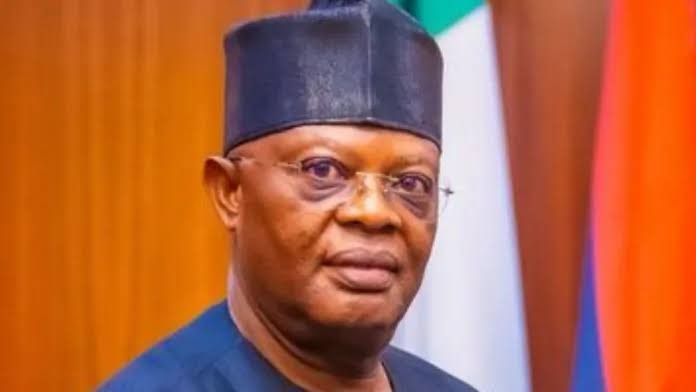Introduction
Museums are an important means of cultural exchange, enrichment of cultures and development of mutual understanding, cooperation and peace among people, ethnic groups and nations. Museums play a vital role in our society, serving as repositories of culture, history and creativity.
Furthermore, they provide a visual narrative of human history and emotions through their collections of arts, artefacts and exhibits. They inspire curiosity, ignite passions and provide fresh perspectives for visitors of all ages. Whether its ancient buildings, ancestral heads and figures, or symbols of death, each piece tells a story and prompts questions about our origins and identity.
Definition of Museums
The Cambridge Dictionary online defined museums as places of study, buildings where objects of historical, scientific or artistic interest are kept, preserved and exhibited.
To the Museums Association, a museum is an institution which collects documents, preserves, exhibits and interprets material evidence and associated information for the public benefit. Since 1998, this definition has changed; museums now enable the public to explore collections for inspiration, learning and enjoyment. They are institutions that collect, safeguard and make accessible artefacts and specimens, which they hold in trust for society. Museums have a long and varied history. It evolved from innate human desires to collect and interpret collections.
Origin of Museums
The word ‘museum’ has classical origins in Greek. But the idea of collecting and preserving objects is universal. For the Greeks the Museion is the temple of the Muse, a building dedicated to the nine daughters of Zeus and Mnemosyne-Greek goddess of memory.
The Greeks believed that knowledge could be gained by worshipping these goddesses who protected and encouraged Greek art, dancing, history, drama, love oratory, religion etc. Coming to the temple inspired people who taught others. The museum started as a religious temple in honour of the Muses.
Historical Foundation of Museums
The earliest known museum was established in 290 BC by Ptolemy Alpheus Soter. He was the governor of Alexandra a Greece city in Egypt. This Museum was run like a university headed by a Priest assisted by a Writer, an Astronomer, a Mathematician and a Physician. The evolution of museums is in epochs. The phases of Museums growth and development are itemised and discussed below one after the other.
Medieval period 9th – 12th Century AD: This period popularly known as THE DARK AGES, was a period of little intellectual development which was characterized by feudalism and local wars. The Roman Catholic Church kept relics of Saints in the Monasteries. The Monks kept records in Scrolls. The Princes and Kings also kept objects.
Renaissance Period 13th – 17th AD: This was the period of re-awakening of learning in Greek and Roman Civilisation. This period led to the formation of modern museums. The 17th Century saw the formation of collections with the clear intention of making them available for public benefit. It was a period of clear departure from the Dark Ages. Museum became public in Europe in the 17th Century.
The first public museum was established in 1671 in Basel, Switzerland. It was mainly from Basilius Amerbach. The Ashmolean Museum opened in 1681 mainly from the collection of Elias Ashmole and that of the trade scants, which were handed over to the oxford university which championed the fight against slave trade from 1772.
The Renaissance returned human beings once more to the culture of life’s stage and infused thought and art with humanistic values. It witnessed the exploration and discovering of new continents, decline of repressive feudal system, growth in commerce, invention of printing, knowledge of compass, gun powder, review of classical learning and wisdom, after a long period of cultural decline and stagnation (history.world.or/renaissance.htm).
18th Century Enlightenment Period: This period encouraged the development of a more systematic and practical approach to things which equally affected the museum world. The scientific method was born at this period. Scientific classification of plants and animals was developed by Carolus Linnaeus of Sweden, this is called Taxonomy. Different types of museum emerged at this time. Formerly, it was only an Art Museum. Scientific treatment of dead animals also started i.e. Taxidermy. These also lead to the growth of natural history. Restrictions in the museums were gradually relaxed.
19th Century Museums: This period witnessed the first fair called the Great Exhibition of the works of industry of all nations. It was organised by Henry Cole and Prince Albert, the husband of Queen Victoria. In the 19th Century, the museum advanced a step ahead of the 18th Century. The 19th Century, the museum became a basis for nation building. It became a rallying point for people to express the pride of their nation. It became a forum for nations to show that they had come of age both in science, technology and arts. This was the period when museums were referred to as advanced schools of self-instructions. The period witnessed a lot of scholarly output in museums. The Victorian Museums placed more emphasis on the concept of making the museum useful by the following.
• Helping people to pursue their work effectively.
• Improving people’s general knowledge.
• Giving a sense of national purpose.
20th Century Museums: Museums had evolved into multifaceted entities serving as educational facilities, leisure destinations, and information centres. The great exhibition precipitated the establishment of other museums. Museums became more public, a lot of demands came to be placed on museums by their societies. The museums shifted from inwardly focused institutions to outwardly driven ones. Museums not only became outwardly involved in the lives of their communities, but also solicited for the active participation of members of their communities in museum activities.
This period also saw the evolution of eco museums. Museums within museums, sites’ museums, and historic house museums, among others.
Conclusion: Museums have a rich and dynamic history, evolving from private collections to global institutions that celebrate human creativity, knowledge and heritage.
Ojeikere is of the Department of Education, National Museum Benin City


